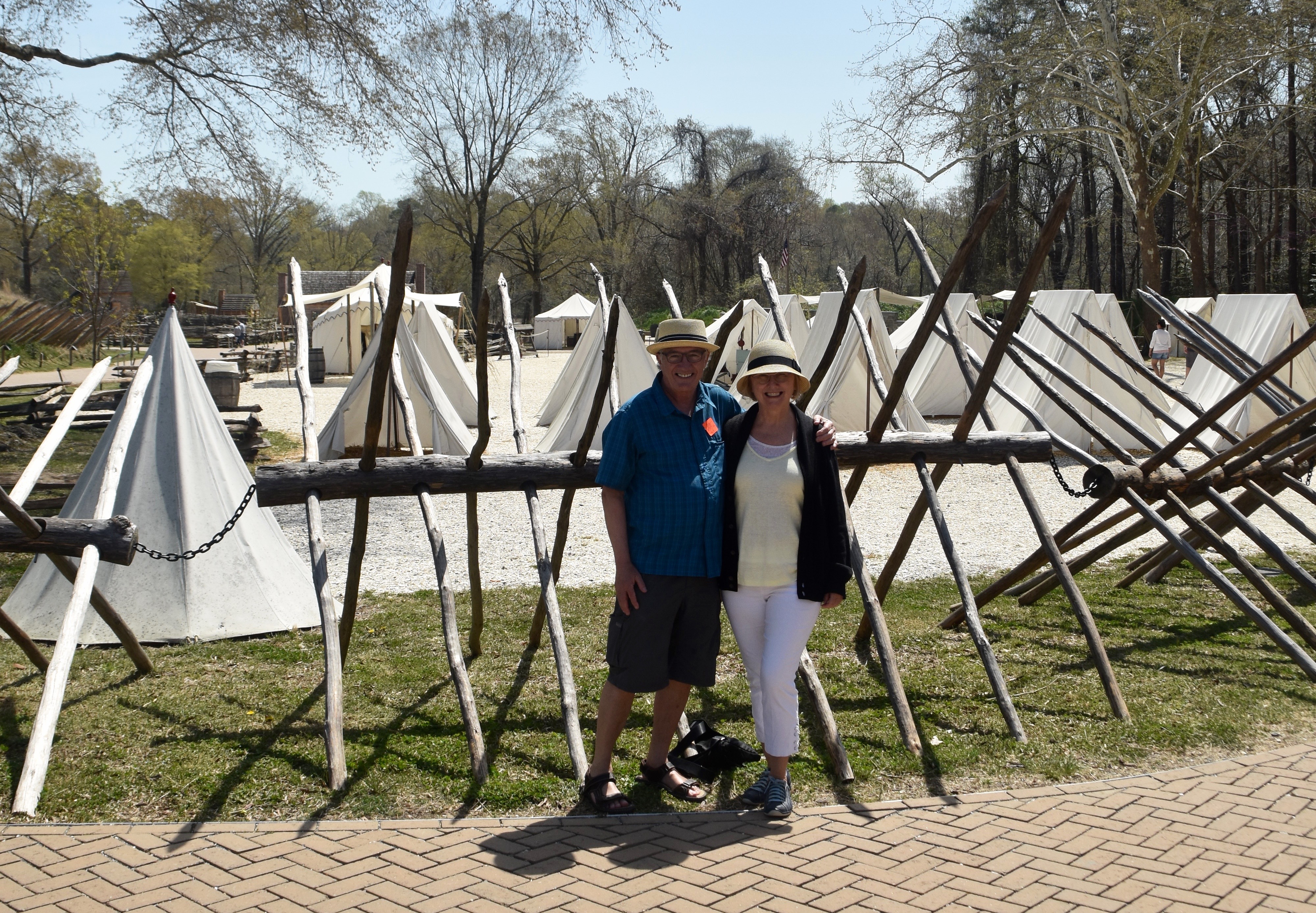American Revolution Museum at Yorktown
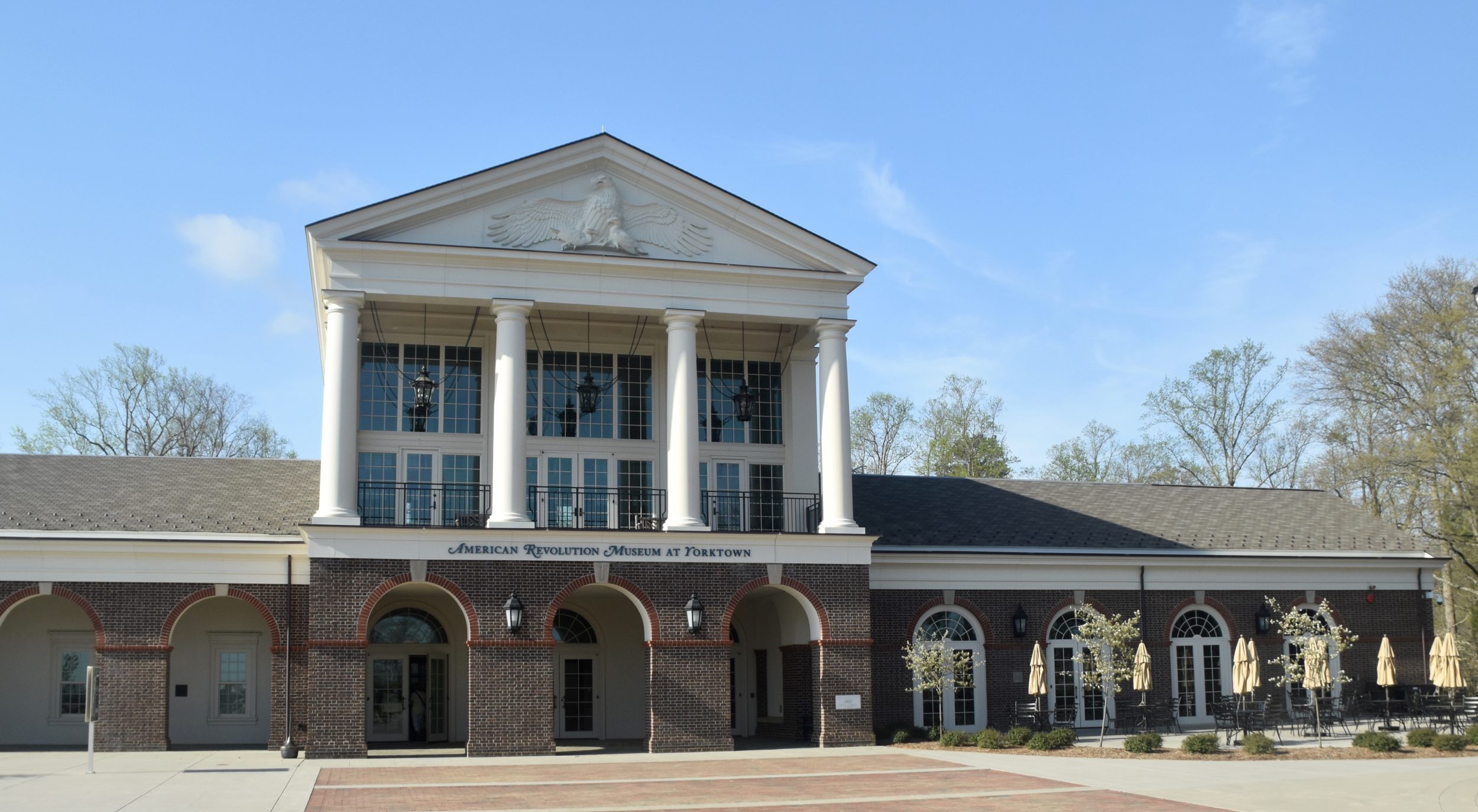
Just over a year ago the American Revolution Museum at Yorktown opened its doors to the public, presenting the history of that seminal event in American history with state of the art technology that is both enlightening and entertaining at the same time. Alison and I recently had a chance to visit the museum and the outdoor displays and came away very impressed with the work that the not-for-profit Jamestown-Yorktown Foundation has done in making the events before, during and after the revolution understandable, not only to Americans, but everyone with an interest in history. Please read on and find out why the American Museum at Yorktown is a must visit when in the Jamestown-Yorktown-Williamsburg area.
First off, the American Revolution Museum at Yorktown should not be confused with the Museum of the American Revolution in Philadelphia which I have not visited, however I did visit Independence National Historic Park earlier on this trip . It seems kind of fitting that there should be museums both where the Declaration of Independence was signed and where the American Revolution came to and end with the successful Siege of Yorktown. If you are a repeat visitor to the Yorktown area, as am I, you might remember a building near where the current museum is located as being the former Yorktown Victory Center, which opened as a Bicentennial project in 1976. But this no simple renaming of an older museum to make it sound new – the old building was completely demolished and new considerably larger building erected. What is there today is not remotely like the previous Yorktown Victory Center. So, if you have been to that former museum, don’t pass on the new one because it is completely different and frankly, way, way better.
Before entering, Alison commiserates with George Washington at the task he has before him of organizing a band of ragtag rebels into a fighting force that can rightfully be called an army.
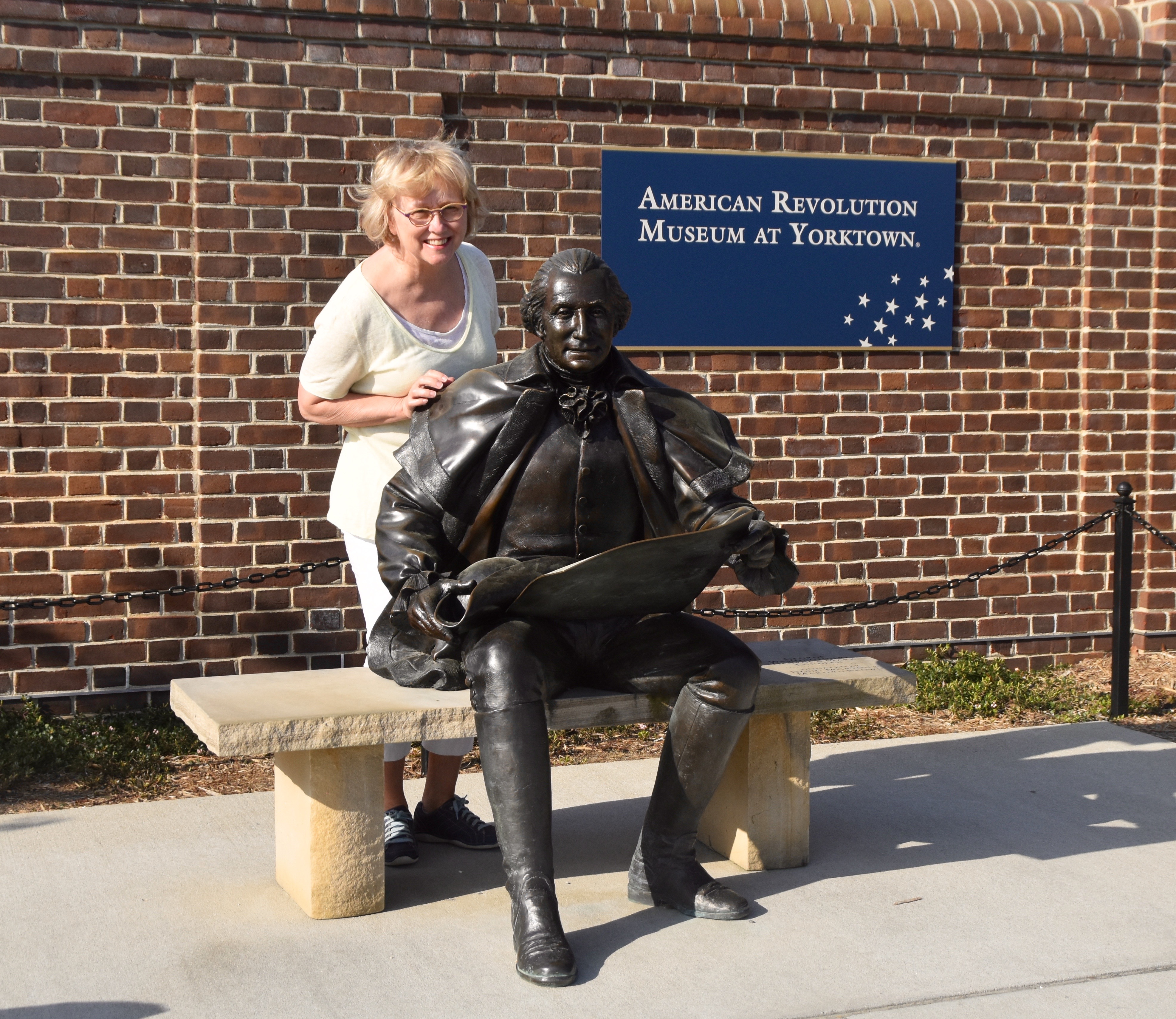
The visit starts with a very well done short film entitled “Liberty Fever” with the narrator bringing up the stories of people of all classes, sexes and races who played a part in the events of the American Revolution. While the revolution itself was mostly fought by and for the rights of those those infamous ‘dead white guys’ that some modern historians like to vilify, the American Revolution Museum goes out of its way to show the perspectives of women, blacks (free and slave) and indigenous peoples. The characters introduced in the opening film will reappear again as you tour the exhibits.
The journey through the museum takes places largely in chronological order with five major themes – first an overview of the thirteen colonies from establishment to war, second, the deterioration of the relationship with Britain, third, the Revolution itself, fourth, the immediate aftermath and adoption of the Constitution and lastly, the emergence of a distinct American national identity. Following this it’s time to step outside and into Washington’s army camp where re-enactors will help us understand what life was like for those who fought in the Revolution. I will highlight what I thought were some of the most interesting and inventive of the exhibits. Fortunately, non-flash photography is allowed for all but a few items on display.
I mentioned that the American Revolution Museum is using cutting edge technology to tell their story and this interactive touch screen map of the Thirteen Colonies is one example early on in the exhibits. It shows the state of the colonies right at the end of the worldwide Seven Years War (also called the French-Indian War in North America) in which Britain emerged the victor and owned a huge swath of land from Quebec to Florida. There are six different categories that can be changed with the flick of a finger. This one is showing the principal products produced or grown in each colony. I was particularly surprised to find out how many slaves were owned in the northern colonies when I pressed on Slavery.

Speaking of slavery, this is the original portrait of a very interesting character, Ayuba Diallo aka Job Ben Solomon. He was a Muslim prince in modern day Senegal who was well educated and despite the fact that the Muslims were often the ones who captured and sold fellow Africans to slave traders on the Atlantic coast, he was himself enslaved while on a trip to modern Gambia. Taken to Annapolis, Maryland he was sold to a tobacco grower and spent two years toiling in the tobacco fields. He then escaped, was captured and jailed. Somehow James Oglethorpe, the founder of Georgia and an early anti-slavery campaigner learned that there was an apparently very well educated and intelligent runaway slave in a Maryland jail and managed to secure his freedom. Ayuba returned to London where he was feted as a celebrity and this painting commissioned, which is believed to be among the oldest in existence depicting an American slave. It is one of two known portraits by British painter William Hoare, the other being in the National Portrait Gallery in London.
Ayuba Diallo also wrote the first of many ‘slave journals’ depicting the life of a slave and the perilous path to freedom.
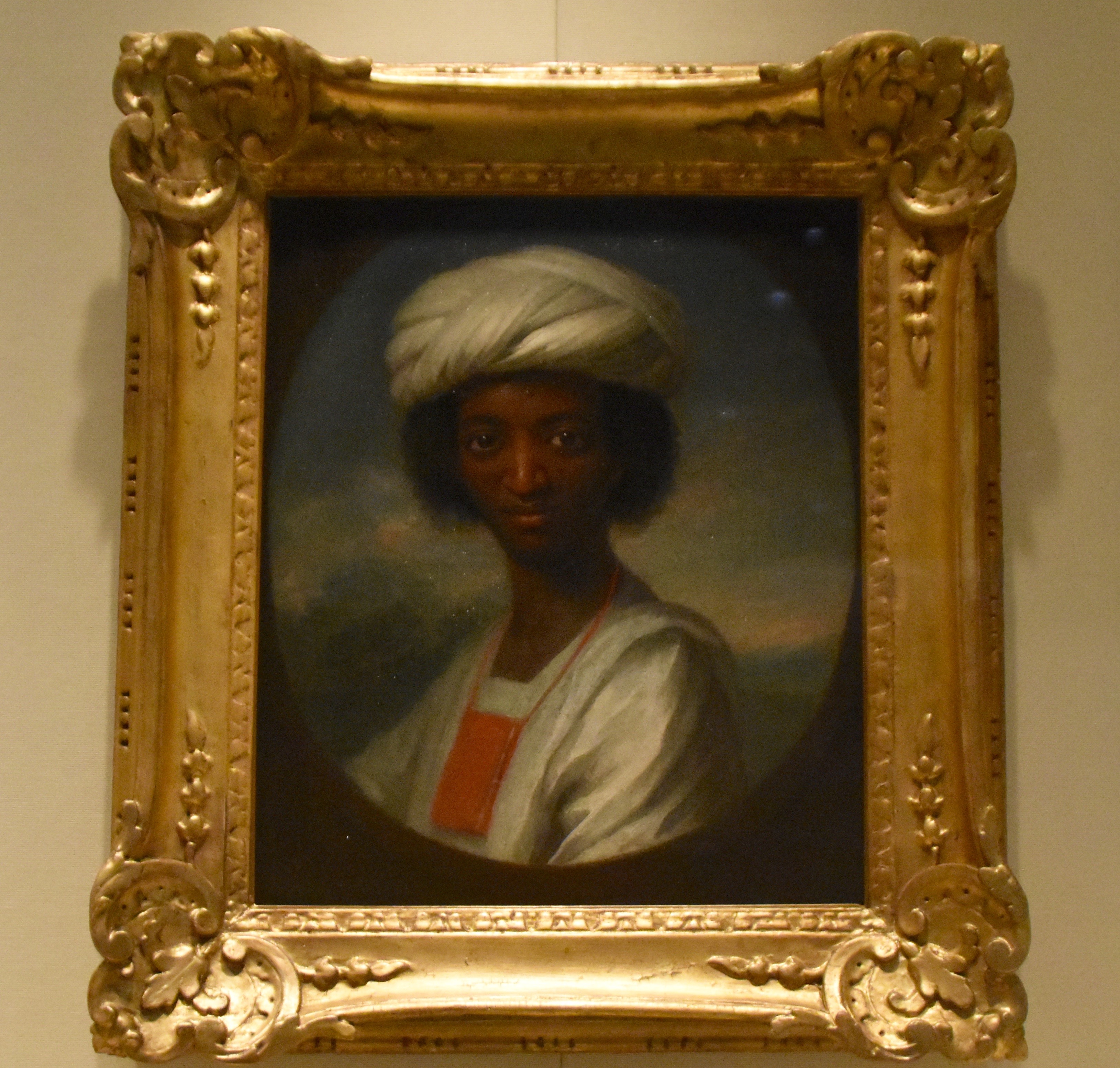
On a much larger scale is this portrait of George III, a copy of an original painted by Allan Ramsey. Just as you will see a picture of the President in most government offices today, so it was in colonial Britain, only it would be a portrait of the presiding monarch with the British Crown at the top of the frame. This portrait would have been in place in the Legislature or Assembly House of every colony at the time the Revolution started. I am a resident of the 14th colony, Nova Scotia, which elected not to rebel and is a Canadian province today. Believe it or not we have a copy of this very painting still hanging in our Legislature in Halifax. The only one that never got replaced.
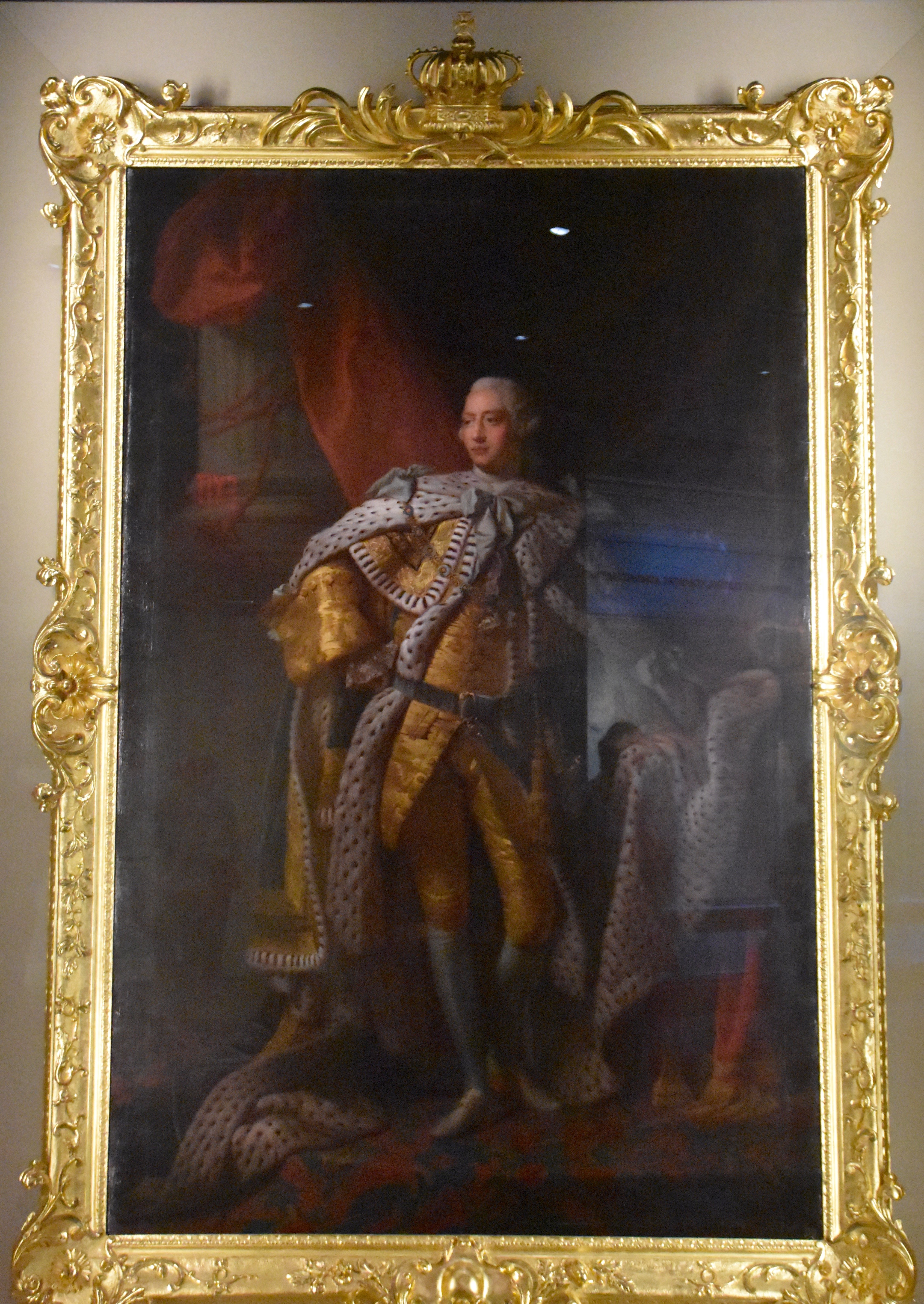
This is Patrick Henry, a native of the Williamsburg area and thus the closest to the events depicted in the American Revolution Museum. Like me, he was a litigator and like all litigators, we tend to get carried away at times and get too flowery for our own good, but sometimes we nail it. And so it was when Henry uttered probably the most famous phrase associated with the events leading up to the American Revolution, “Give me liberty or give me death”.
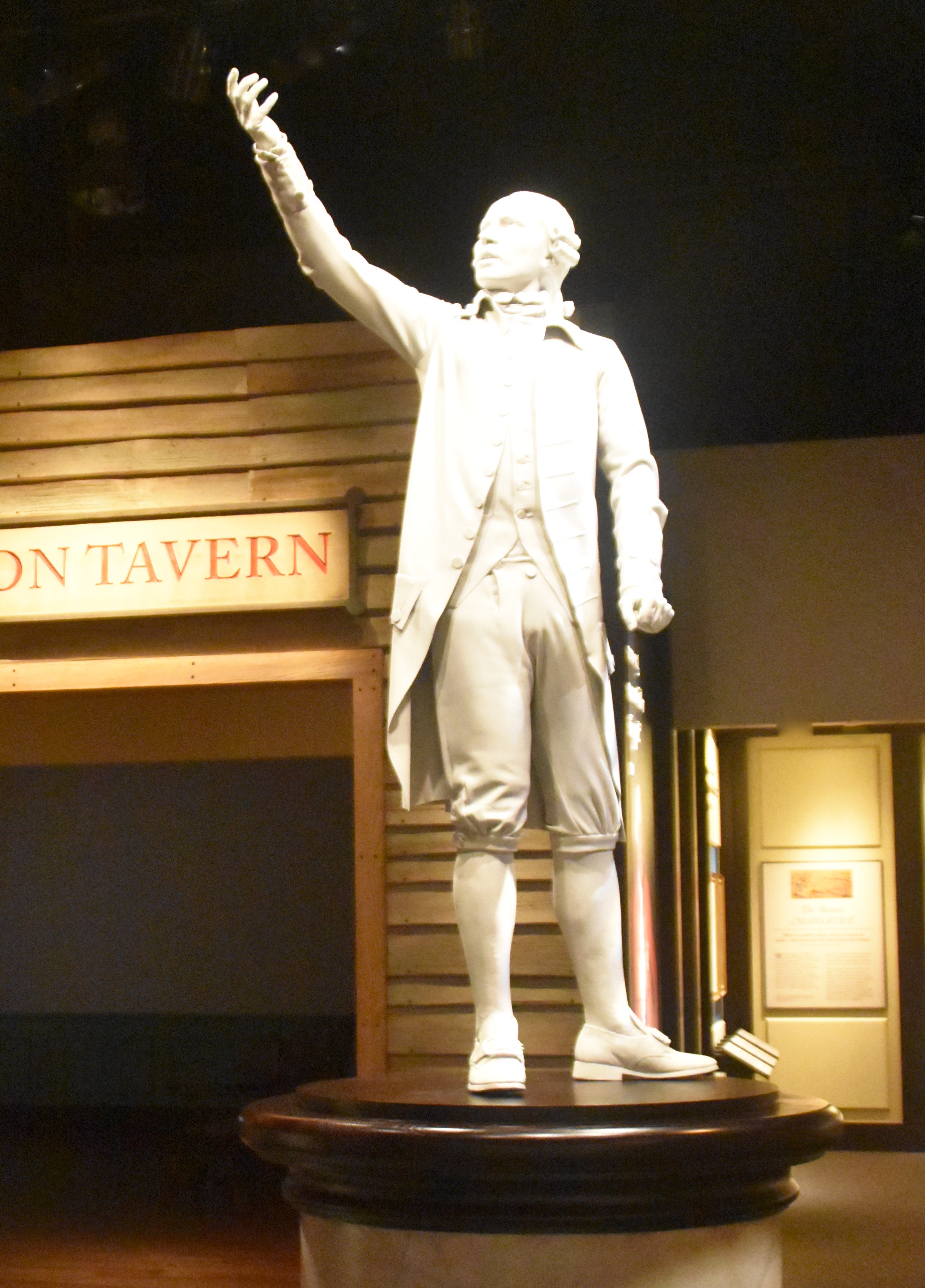
The sad fact is that Henry, who would become a five-term governor of Virginia, was also a slave owner, even receiving them as wedding presents, and never admitted the hypocrisy of his statement. That failure by the founding fathers to deal with the issue of slavery would inevitably lead to the most cataclysmic event in American history, the Civil War.
Behind Henry is the Red Lion Tavern where a short film sets out the grievances of the colonists, often exacerbated by a few too many ales at the local pub.
This is a Stamp Act embosser which seems like a pretty harmless thing unless someone brained you with it, but it was one of the primary causes of the Revolution. I bet you’ve heard of the Stamp Act, but probably had a modern day postage stamp in mind, when the reality is that those stamps never came into existence until 1840. Although the Stamp Act lasted only a year, it left a lasting aversion to paying taxes that remains to this day.
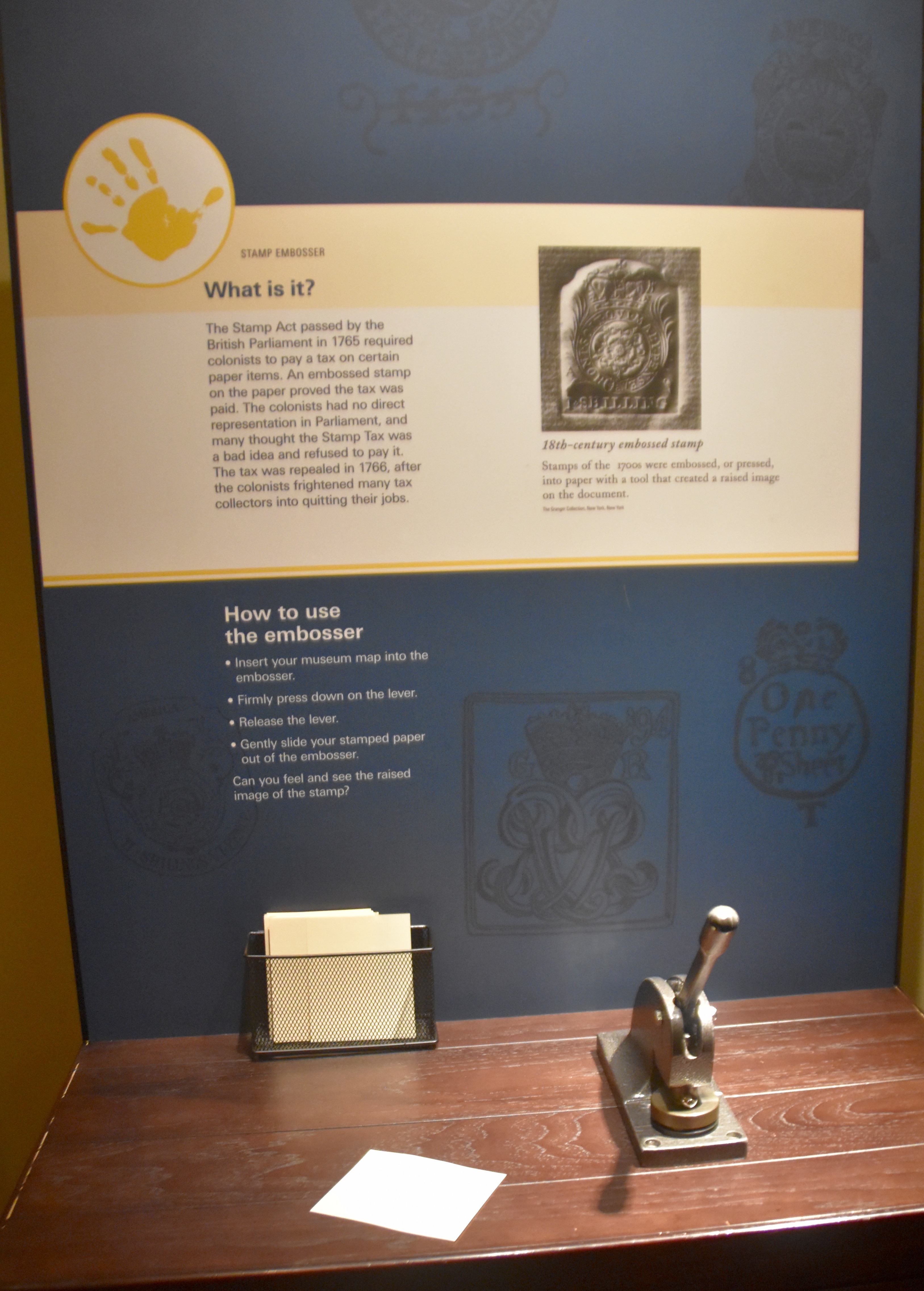
In 1774, King George III threw down the gauntlet and dared the colonies to rebel.
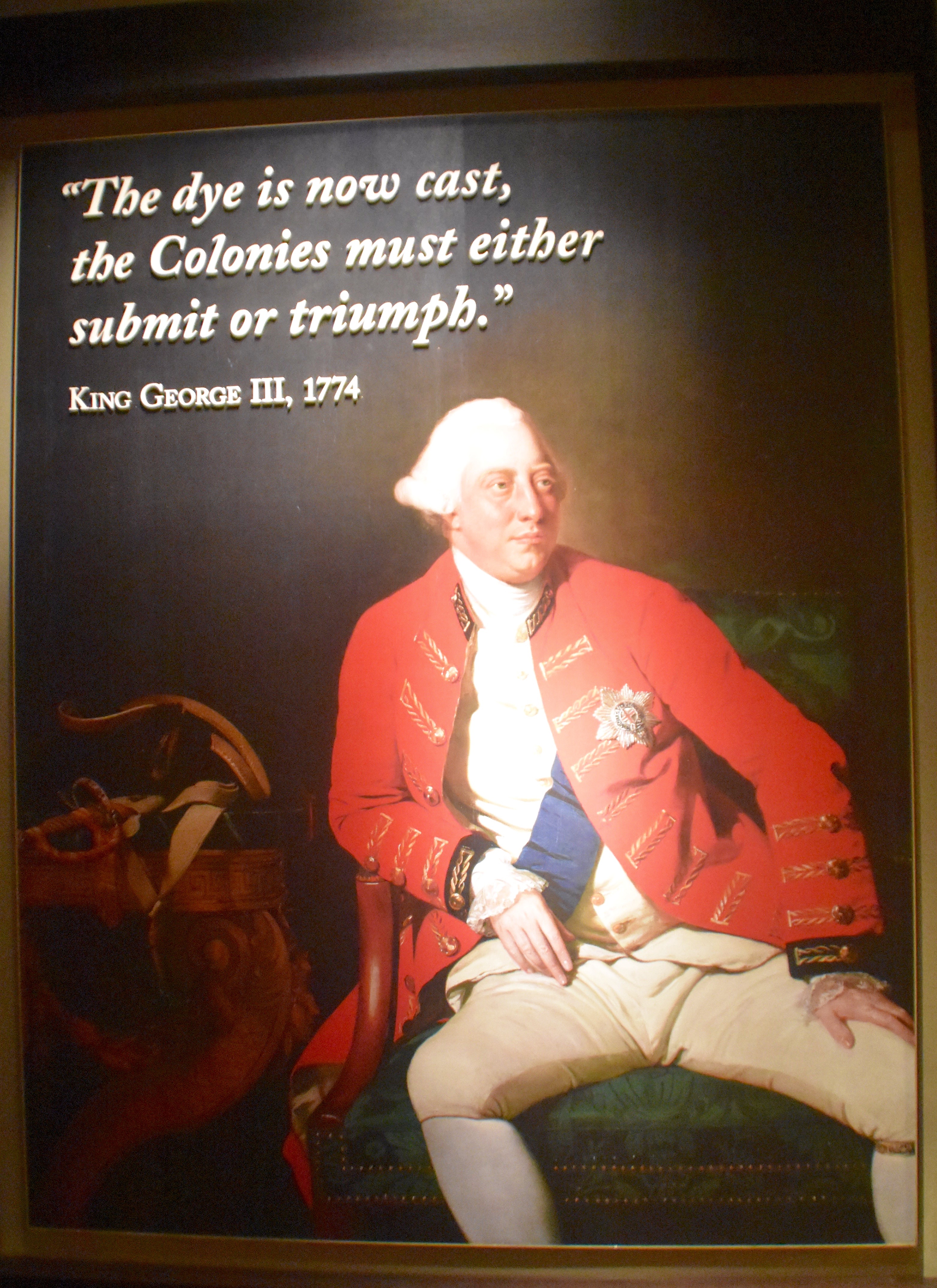
They accepted his challenge on April 19, 1775 starting with the ‘Shot heard round the World’ at Lexington, Massachusetts.
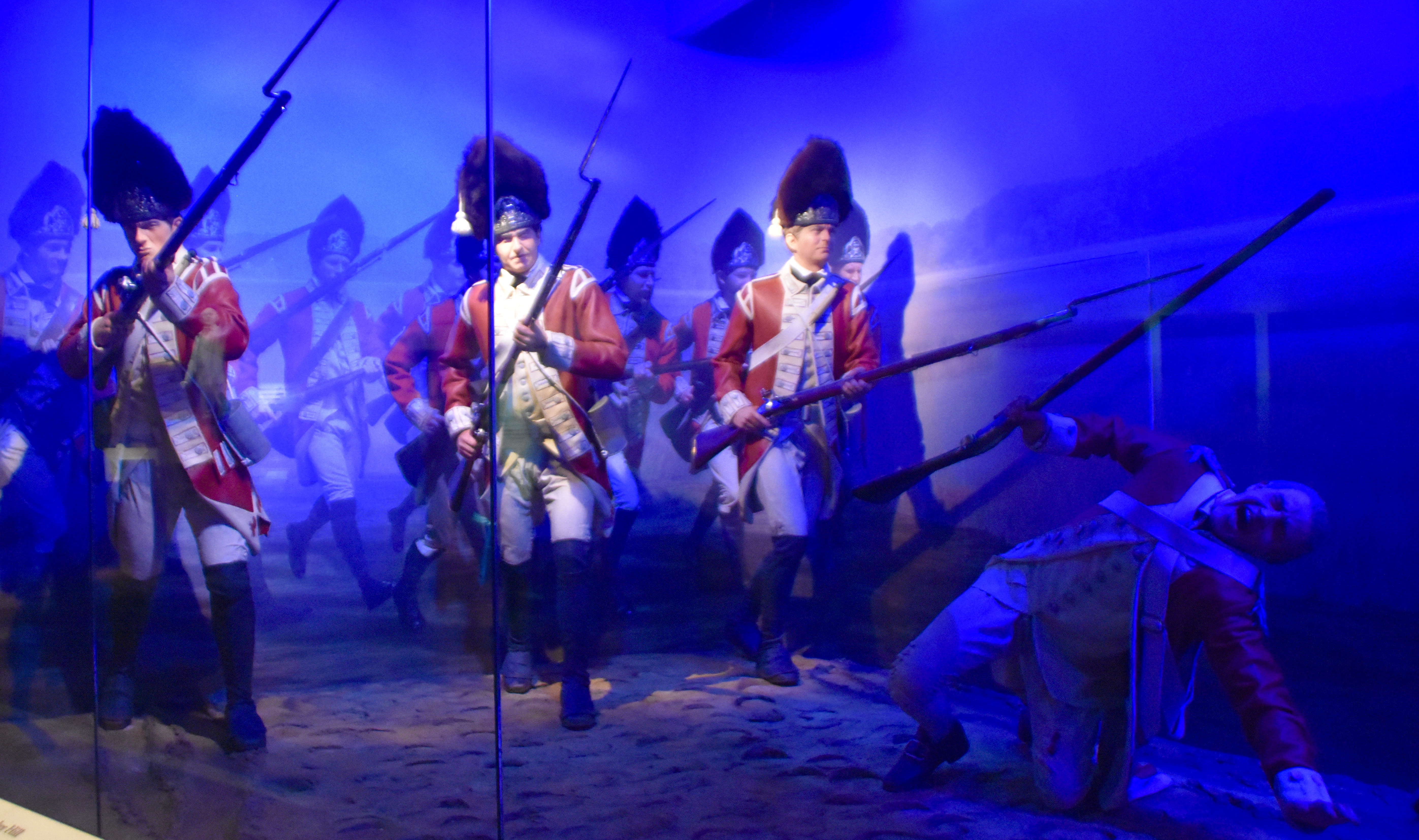
One of the most valuable and rare documents on display at the American Revolution Museum is this very early copy of the Declaration of Independence which printed and distributed as a broadside in Boston within a month of the proclamation in Philadelphia on July 4, 1776.
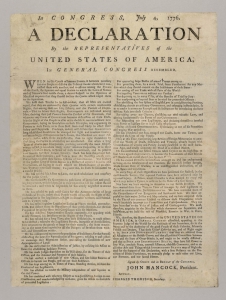
Thomas Jefferson is credited with the drafting of this most famous document in American history.
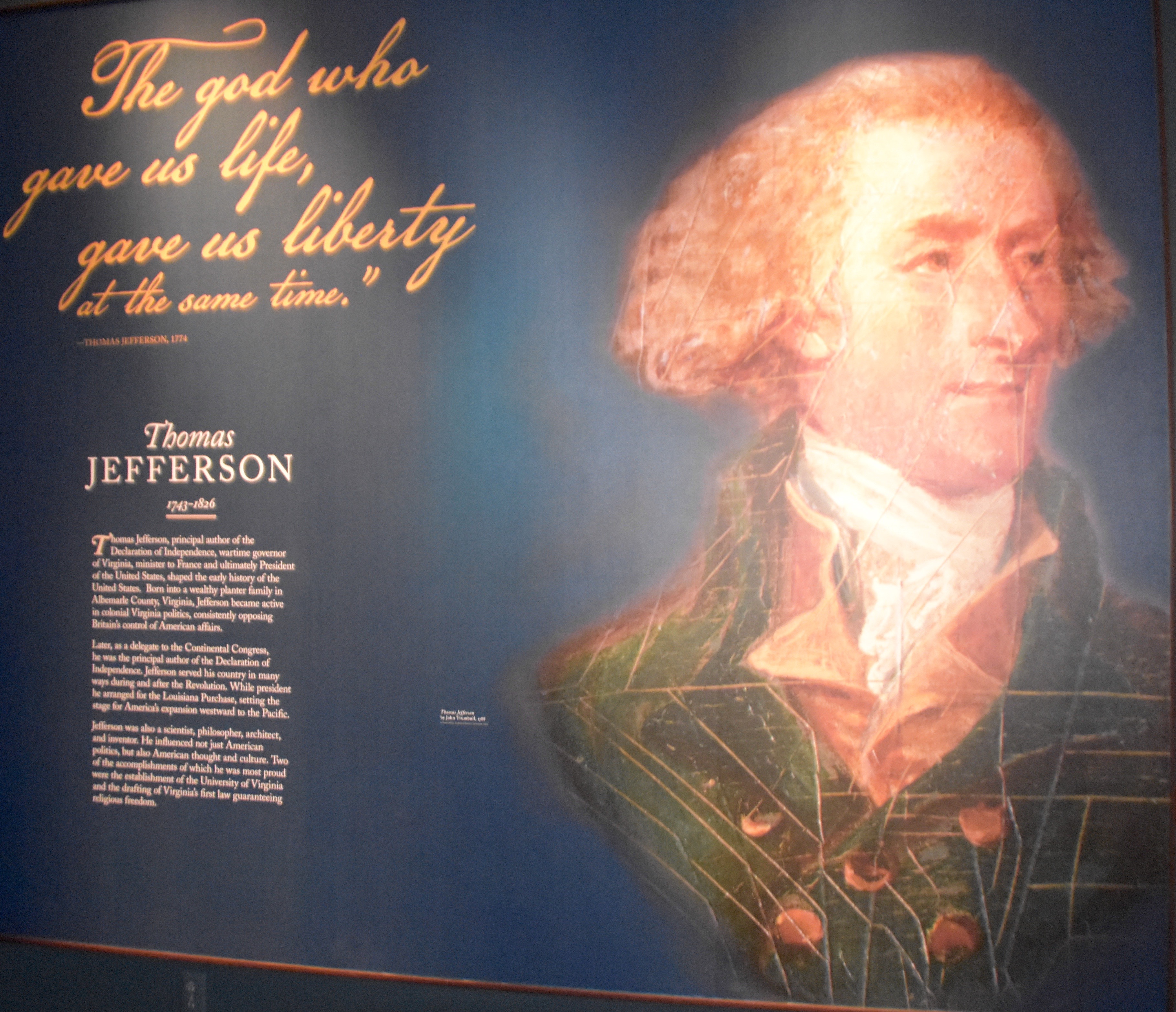
I found this to be one of the most interesting exhibits in the American Revolution Museum. By touching the screen you can bring to life the personal stories of a number of individuals with completely different perspectives. This screen shows the story of Shadrack Furman, a free black farmer who was a Loyalist. For this loyalty he was given five hundred lashes, made lame and blinded by his revolutionary neighbours. Somehow he made it to London where he died a beggar in the streets. There was a time that a museum dedicated to any particular cause would never portray the other side as anything but ‘the enemy’. The American Revolution Museum does a very good job of not falling into this one-sided version of history.
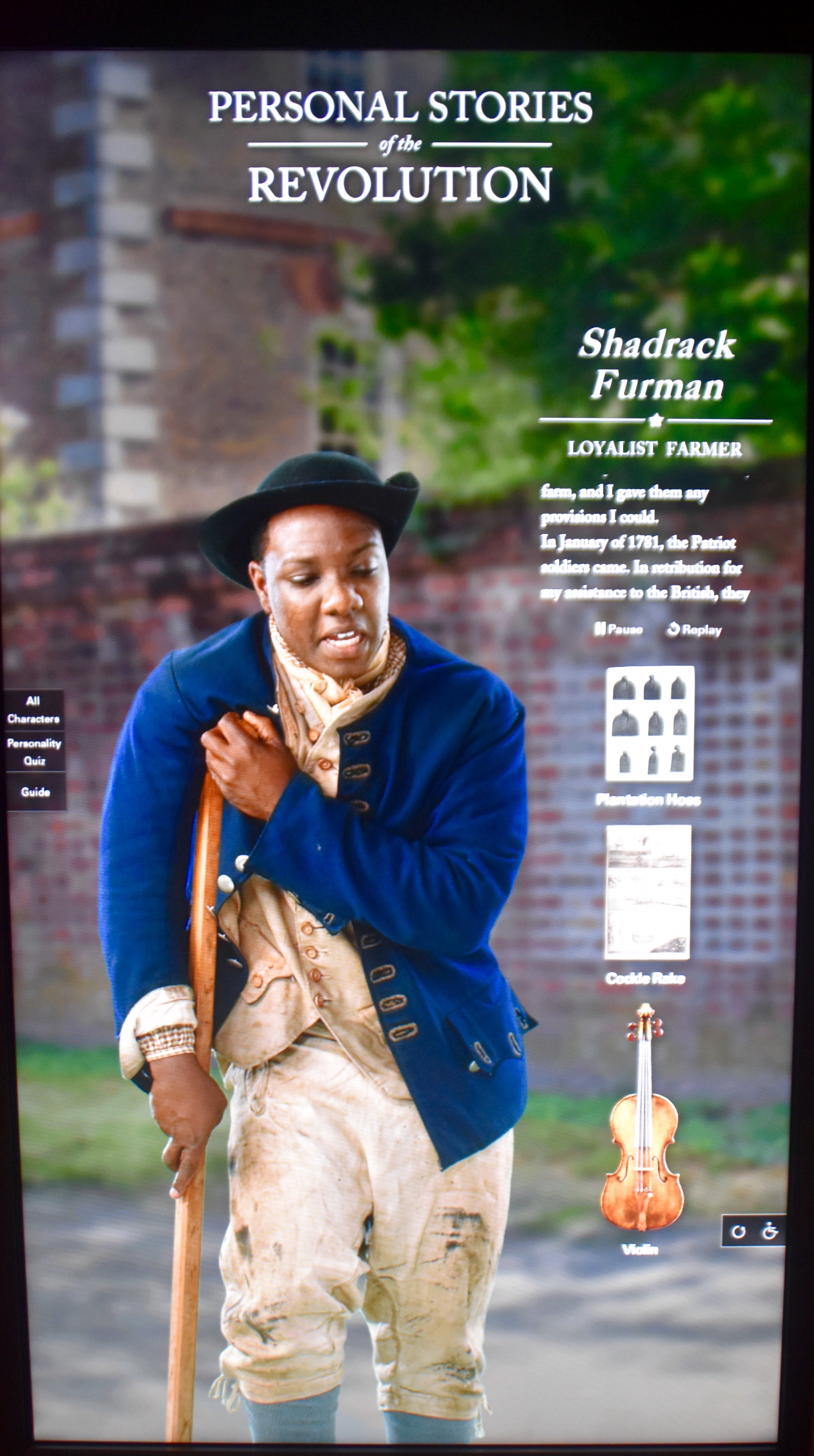
Another interesting interactive exhibit which I don’t have a picture of, lets two people re-enact some of the famous battles of the Revolution. Somehow, leading the Americans, I managed to lose the Battle of Cowpens to Alison who was leading the British – this despite the fact that in reality it was an overwhelming American victory.
Here’s another interactive exhibit that gives you instant information on dozens of battles, large and small, that were fought between 1775 and 1781.
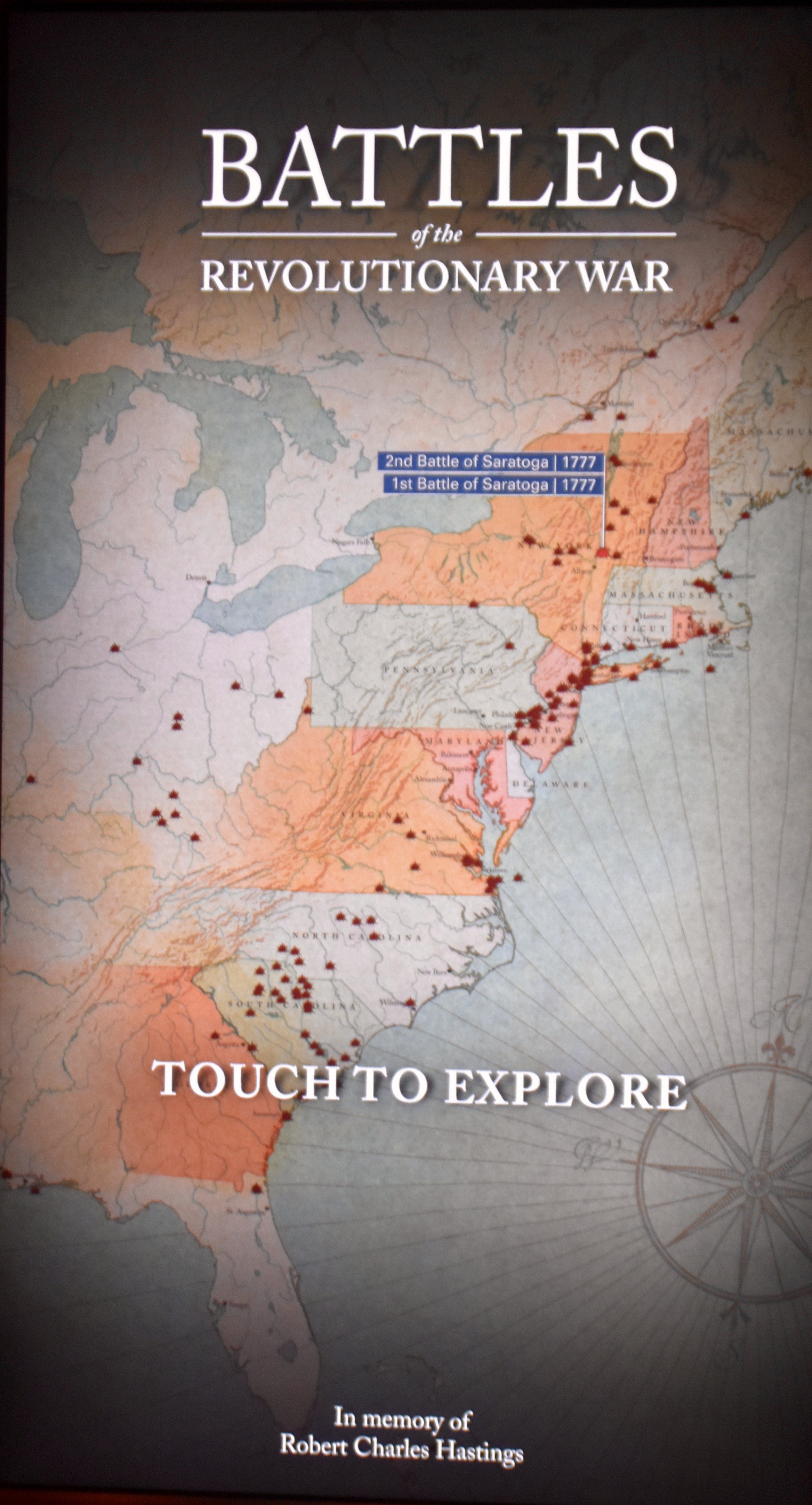
After finishing the last of the battles you come to this copy of the George Washington statue by Jean-Antoine Houdon that is found in the Virginia State Capitol in Richmond. A king has been replaced by an elected President.
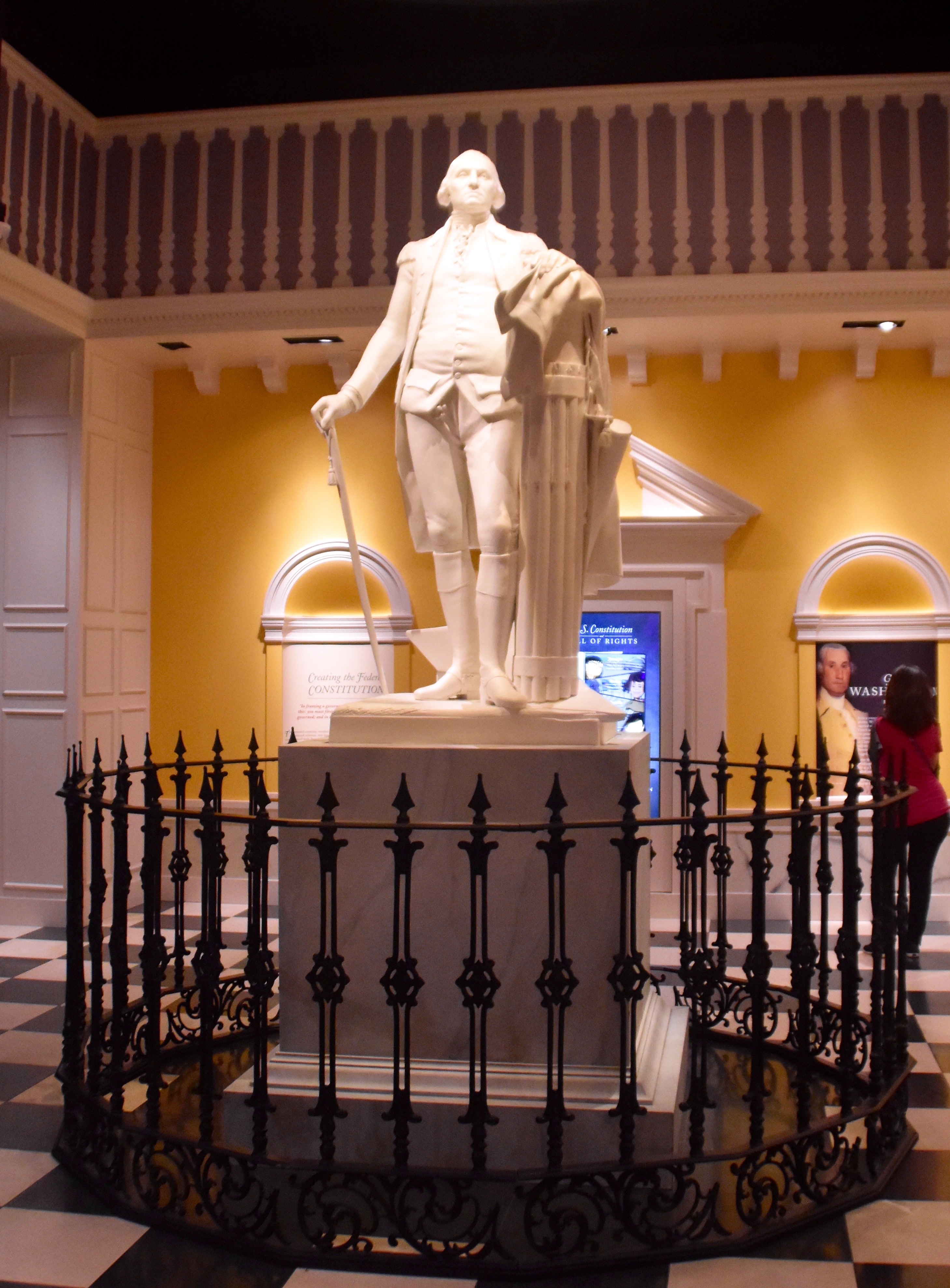
One last thing to see inside the museum is the ultimate in an interactive exhibit because you can do it from the device you are reading this post on.
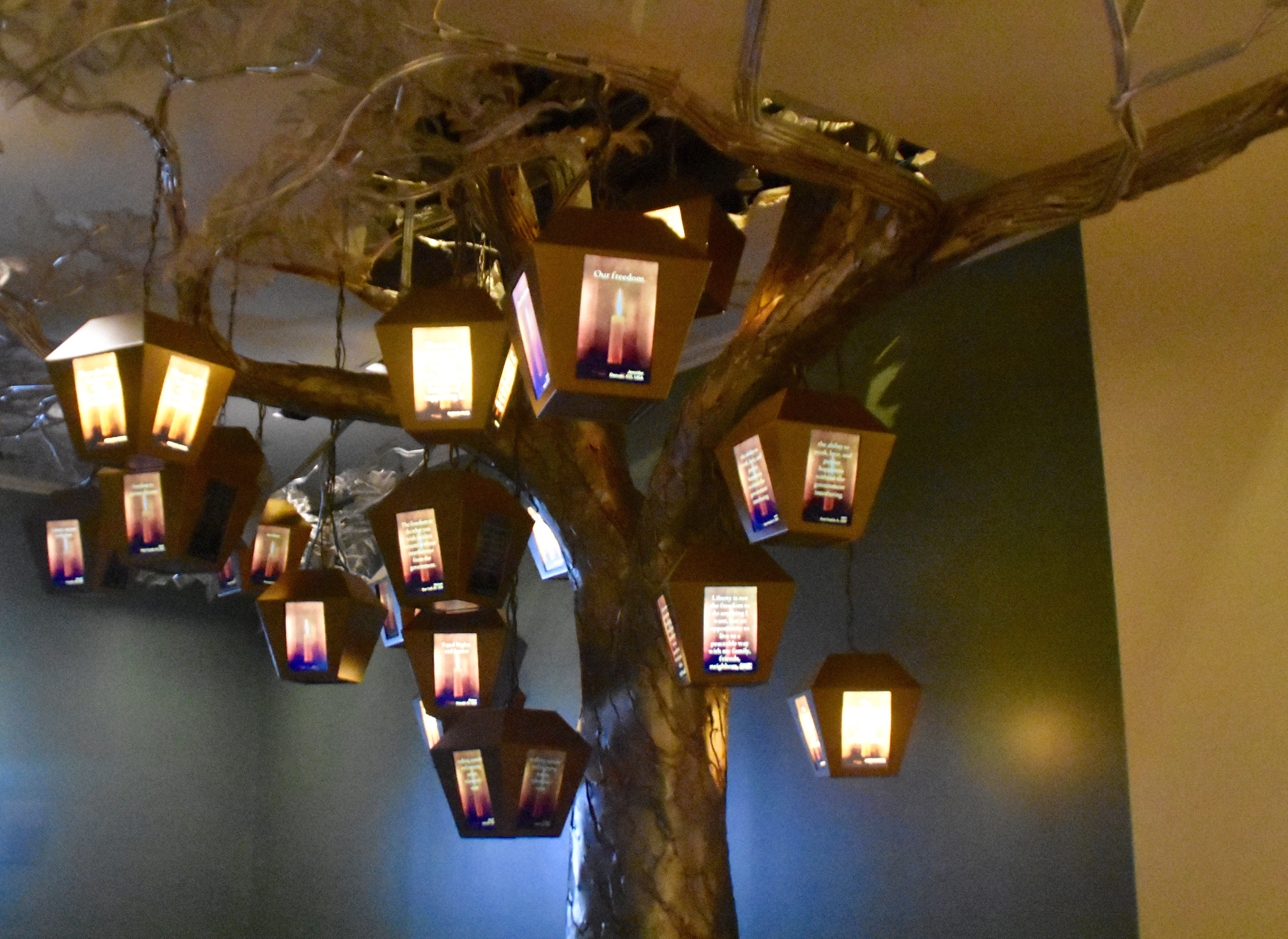
This is the Liberty Tree and if you follow the link you can write your own personal message of freedom and post it to this replica of the original Liberty Tree in Boston. Try it. Of course, you can also do it in person at the museum.
Also, in preparation for your visit you can download an app that let’s you tour the museum in one of four themed manners – as a patriot, a loyalist, a woman or a child. Click on this link for more information.
After touring the museum Alison and I had a very reasonably priced lunch in the museum cafe, bought some souvenirs (including the hats we’re wearing below) at the large and well-stocked gift shop and then headed for the outdoor displays.
Outdoors at the American Revolution Museum
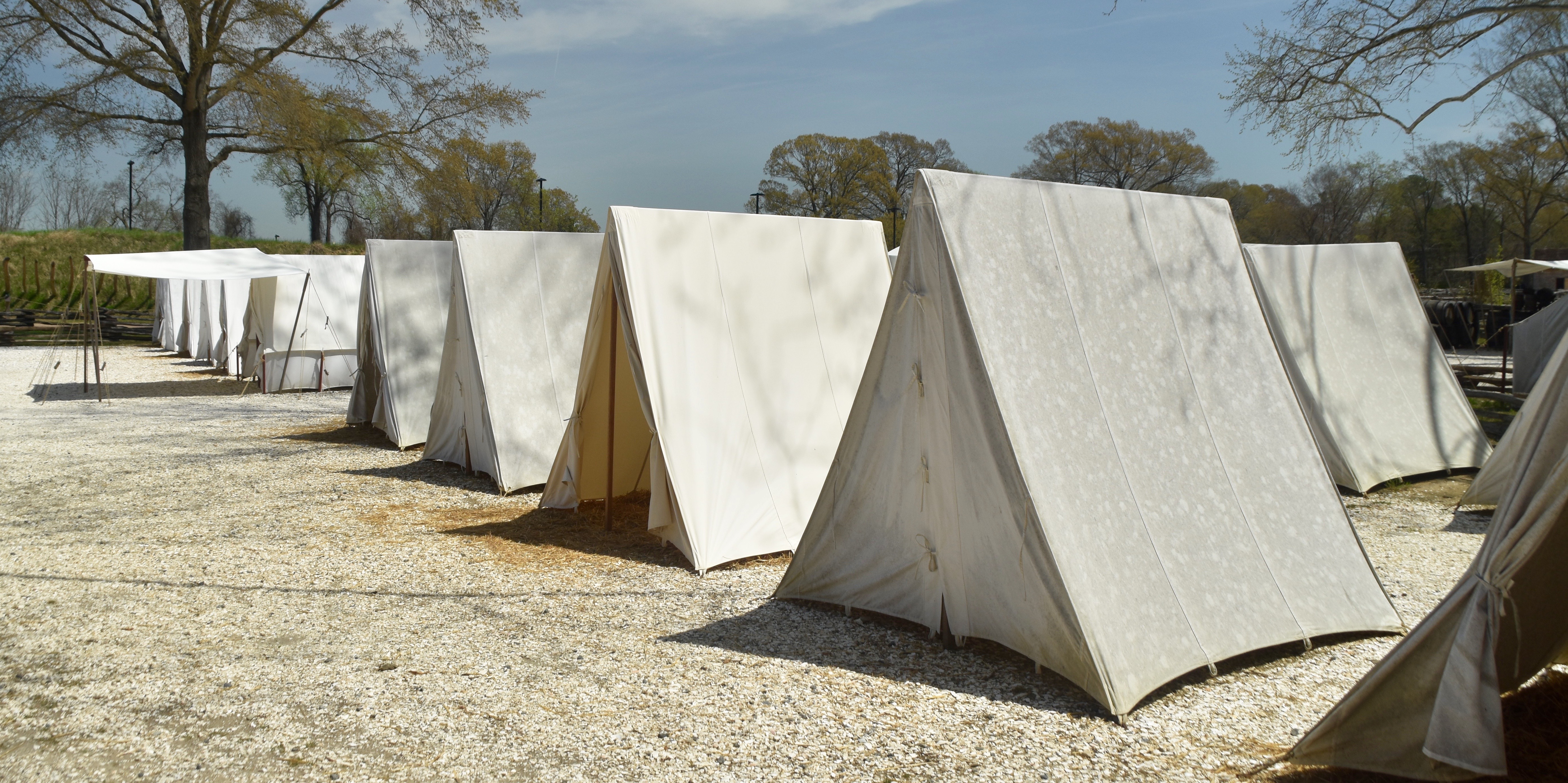
The outdoor portion of the American Revolution Museum at Yorktown consists of a Continental Army encampment and a farm, both as would have existed during the year’s of the war. There are re-enactors, dressed in appropriate costume at both sites, and like all the re-enactors we encountered during our two day stay in the Yorktown-Jamestown area, very knowledgable about the roles they are playing. I was particularly impressed by this army surgeon who knew the gruesome details of every surgical instrument and exactly how it was used in the days when amputations and other operations were performed without anesthetics. Believe it or not, one of the more successful operations was trepanning, which involved cutting a hole in the skull to relieve pressure from a swollen brain brought on by a concussion.
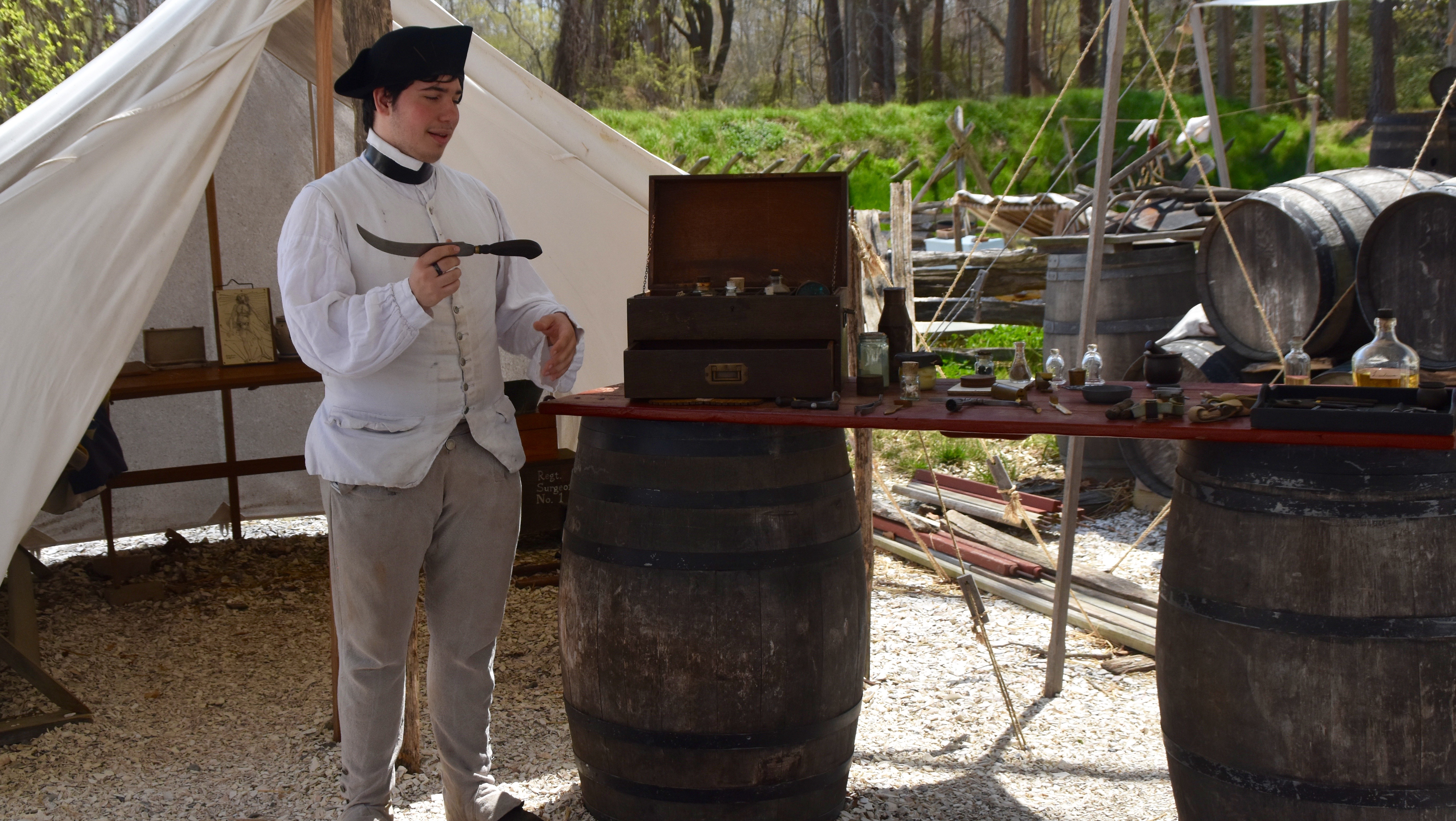
This portly gent gave his audience a drill lesson followed by showing just how fast soldiers could load and fire a musket.
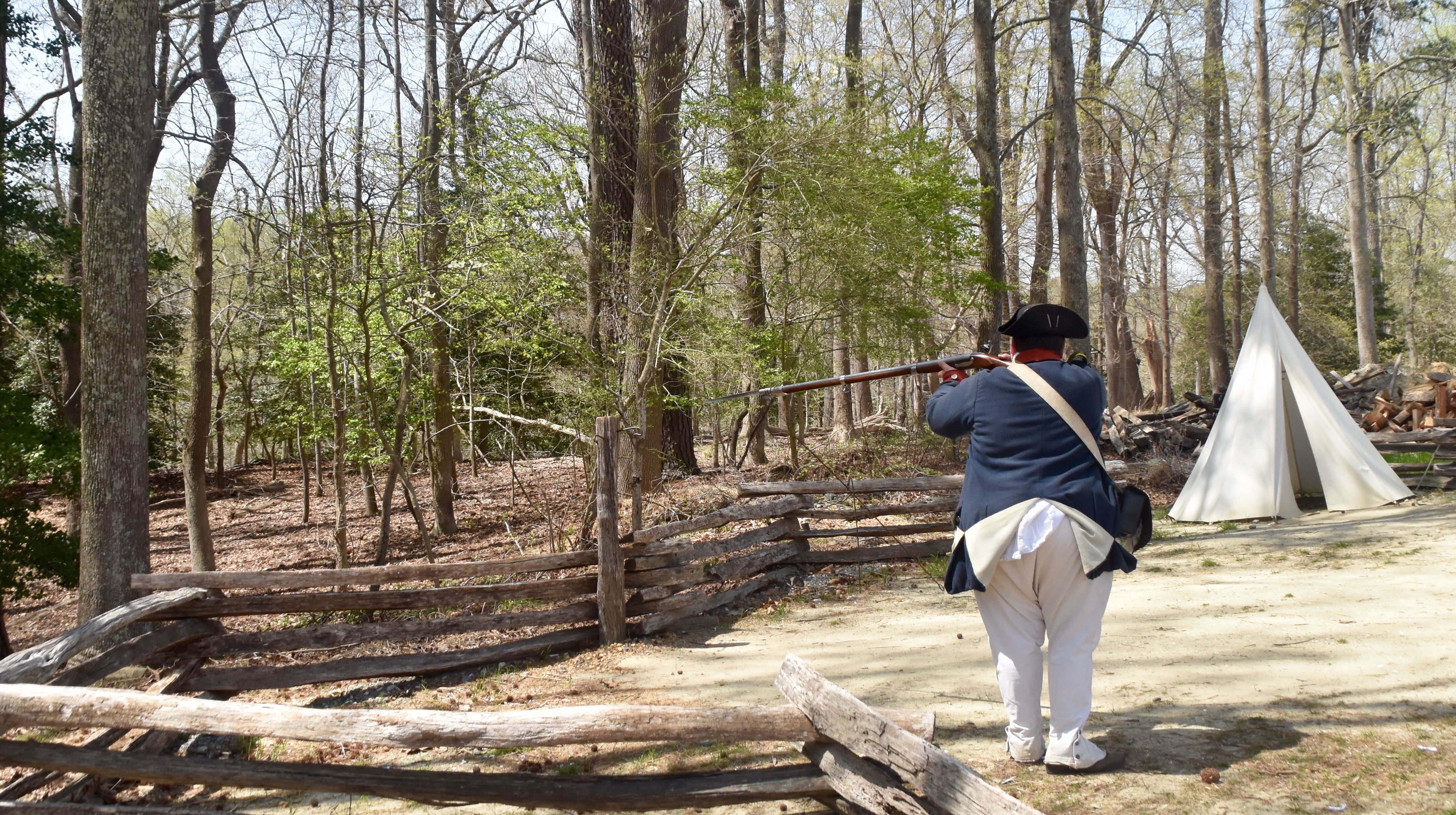
Here I am inside an officer’s tent writing out orders for the day’s military operations using a quill and ink.
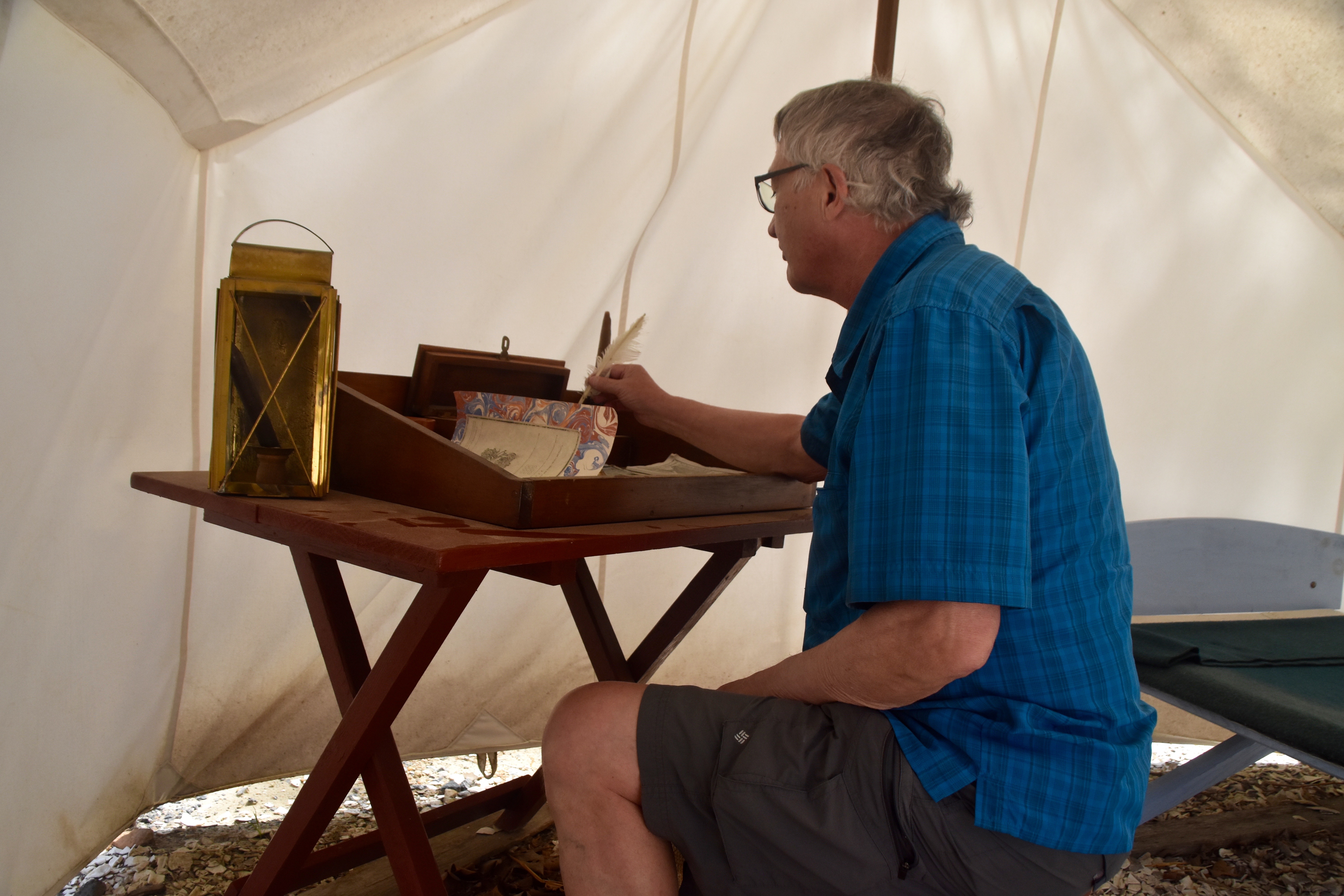
In the late 1700’s Virginia farmhouses in the area were constructed of sturdy logs with brick chimneys and glass windows. Actually quite luxurious for the time. These farmers grew a variety of crops and raised livestock, notably pigs, which became the basis for the famous Virginia smoked hams that are still much in demand today.
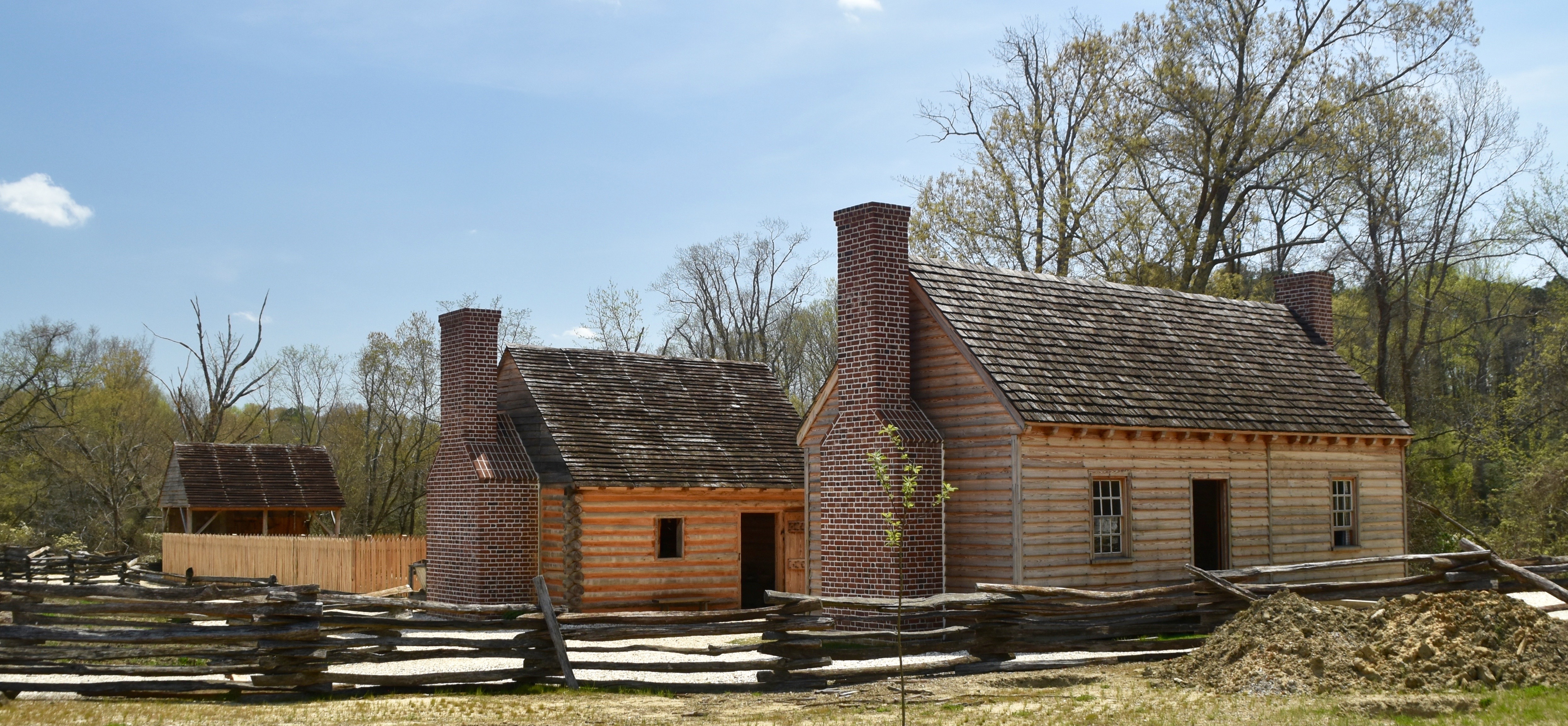
While the fields were worked by the men and slaves (up to a half dozen on a farm like this), the women tended to the home front by baking, sewing and other home crafts.
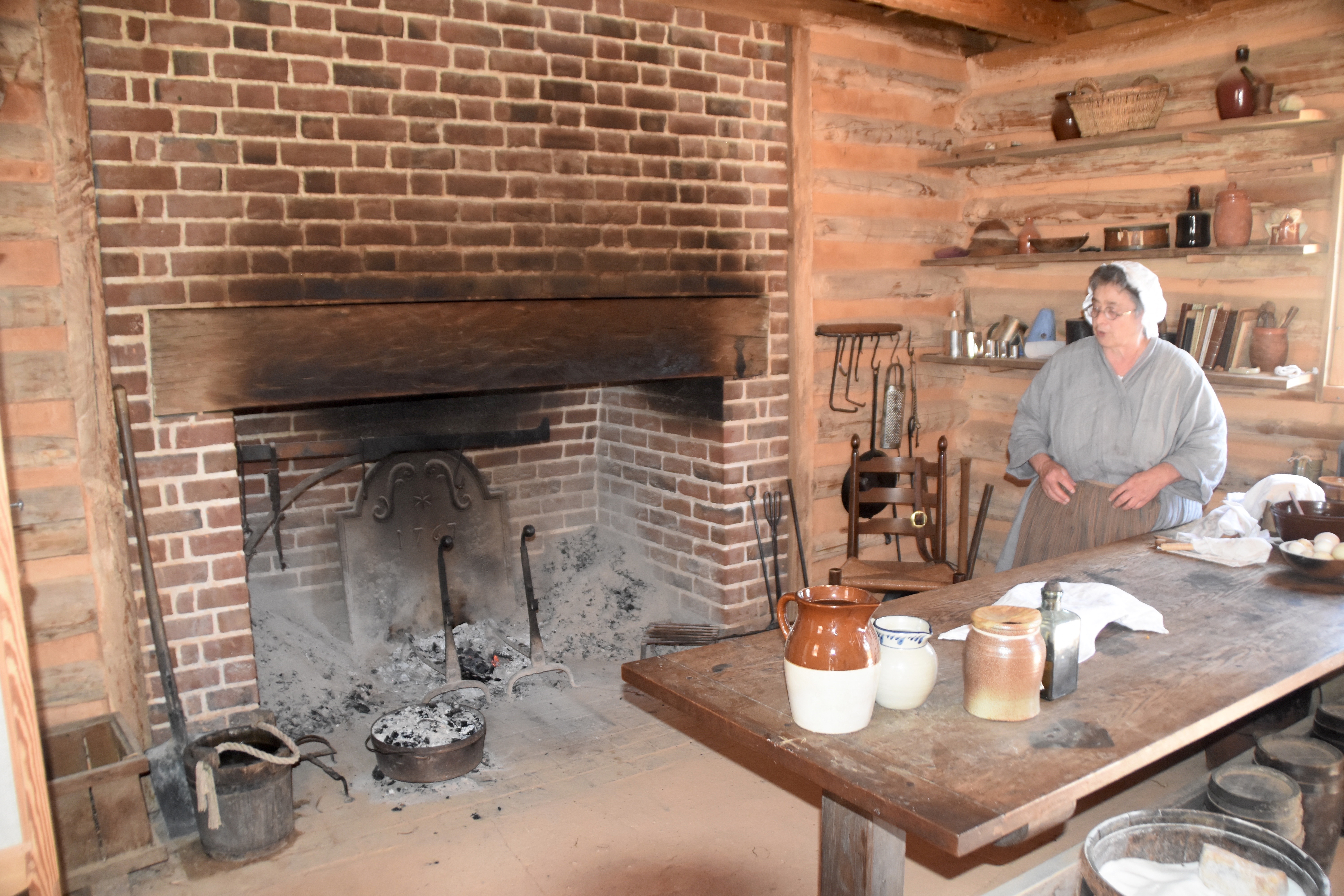
Altogether we spent over half the day visiting the American Revolution Museum and enjoyed every minute of it as will anyone who has an interest the birth of the United States. There are a ton of things to see and do on the Yorktown Peninsula and this museum is one of the best of them.
